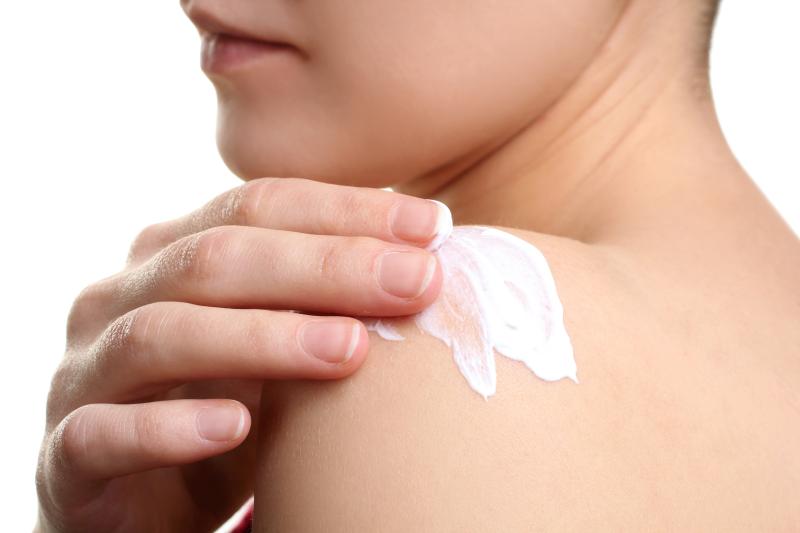
Aqueous cream moisturizers that do not contain sodium lauryl sulphate (SLS) are less irritating to the skin than SLS-containing ones, while achieving similar levels of hydration and skin barrier integrity, according to a recent Singapore study.
“With its low irritancy potential and ability to maintain skin integrity and hydration, SLS-free aqueous cream appears to be a safe and effective alternative to more expensive commercial moisturizers,” said researchers.
Using Finn chamber occlusions, researchers created patch test chambers on the backs of 12 healthy adults (mean age, 38.3±13.2 years; seven women), delineating 10 skin regions between the scapulae and waist. Over the 7-day treatment period, no adverse events were reported, and no changes in erythema, desquamation, pruritus, and stinging or burning scores were documented. [J Clin Aesthet Dermatol 2019;12:52-58]
Day 3 transepidermal water loss (TEWL) increased significantly in the skin sites treated with SLS-containing aqueous cream (median increase, 2.9 g/m2/h; p=0.02) and with the positive control of SLS 1-percent aqueous solution (median increase, 3.8 g/m2/h; p<0.01). No such change was reported for sites occluded with the SLS-free cream (day 3: p=0.06; day 7: p=0.86).
The commercial moisturizers (Physiogel, Cetaphil and Cerdan), as well as the urea cream, likewise significantly increased TEWL after 3 days. However, the 7-day change failed to reach significance, indicating the recovery of skin barrier integrity. This recovery was slower in the SLS-containing cream, whose effects on TEWL persisted until day 7 (median increase, 2.2 g/m2/h; p=0.01).
Even while the SLS-free aqueous cream moisturizer was gentler on skin barrier sensitivity, it did not compromise skin hydration capabilities. At day 3, Corneometer readings found no significant reductions in skin hydration from baseline in both the SLS-free (p=0.81) and SLS-containing (p=0.81) creams.
The positive control, however, was associated with drier skin after 3 days (median decrease, –12.1 arbitrary units [AU]; p=0.02).
Moreover, by day 7, both the positive control (median decrease, –18.4 AU, p=0.01) and the SLS-containing cream (median decrease, –18.2 AU, p=0.03) resulted in significant drops in skin hydration, while the change in sites treated with the SLS-free cream remained null (p=0.29).
“Our findings of TEWL from baseline to Day 7 across the moisturizers suggest that SLS in SLS-containing aqueous cream contributes to the disruption of skin barrier integrity that increases TEWL, and that SLS-containing aqueous cream appears to cause more barrier function damage and likely delays recovery of skin barrier integrity compared to other moisturizers,” said the researchers.
“We acknowledge the cost advantages of SLS-free aqueous cream compared to other commercial moisturizers,” they continued. “Not only did SLS-free aqueous cream appear to conserve the natural skin barrier integrity and maintain skin hydration, but it also did not cause obvious skin irritation.”
Future studies are needed to confirm the findings, the researchers added. Large-scale studies, in particular, will be useful to better characterize the effects of different types of skin moisturizers, allowing professionals to produce better, individualized prescriptions.